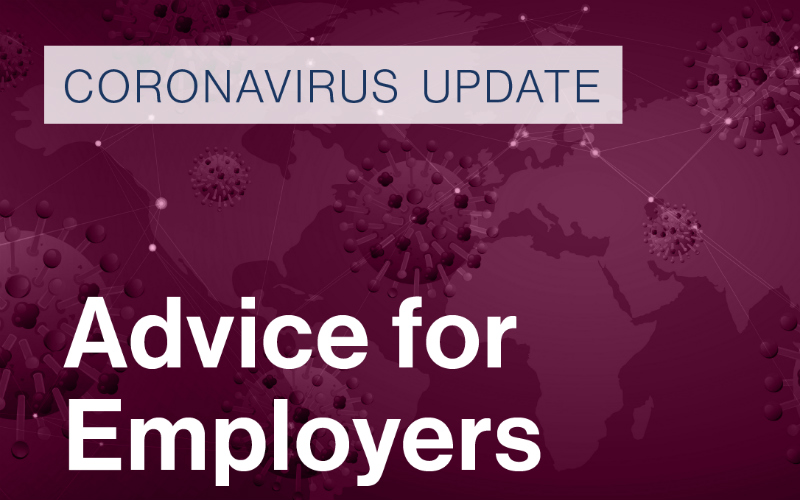
On Friday 20 March the Chancellor took the unprecedented step of introducing the Coronavirus Job Retention Scheme amid the crisis facing many businesses of having to immediately lay off staff. The detail of the scheme is still to be fleshed out as well as the process for claiming it, but below we have tried to answer some questions which businesses are likely to face immediately.
What businesses qualify for it?
Unlike some of the other support, it is not limited to size or sector. Any business which otherwise would be laying -off staff as a result of the crisis can apply for 80% of those employees wage costs per employee up to a maximum of £2,500.
Will it cover all my employees?
No, it is only for those employees who you would otherwise be laying off i.e. making redundant. Further in the Covid-19 Guidance for Employees it makes it clear that they should not undertake any work for their employer when they are being “furloughed” and therefore we do not expect that it will apply where an employer exercises a contractual right to put staff on short-time working, as they will be carrying out work for the employer. Furloughed has no meaning in employment law terms but is the word used by the Government to described staff who would otherwise be laid off. This means that it will not apply to staff who you have put on short-time working or cut their hours. If they have agreed to that then you will have to pay them a pro rata proportion of their salary. It is not clear if you have a contractual right to temporarily lay-off staff whether you will be entitled to the scheme for those workers, however we would hope that it does.
Will my employees receive 80% of wages up to £2,500 in their hand?
It is not clear yet whether the 80% of gross wages is what the employee will receive in their hand, or whether for example employers NI, employees NI and auto-enrolment pension contributions will be deducted as part of wage costs from the 80%. The Guidance only says that “HMRC will reimburse 80% of furloughed workers wage costs, up to a cap of £2,500). Further the full £2,500 is only available for employees who earn £37,500 or more. We obviously need more clarity on what employees will actually receive, as this is the first thing you will be asked.
Do I need to top up wages by 20%
No, there is no requirement to top up, although some employers may choose to if they can afford it.
What do I need to do to apply?
Businesses will have to designate employees as furloughed employees through a portal which HMRC is setting up. Given the speed of the announcement this has not happened yet and may take a few weeks. The Guidance issued says HMRC is working to set up a system for reimbursement. This seems to suggest that it will be the employer who will make the payment to the employee and be reimbursed by HMRC for it.
Can I automatically place staff on furlough?
No. The Guidance for Employers makes it clear that this change to an employees status (of not being at work) is subject to existing employment law. What this means in practice is that you will have to immediately try and get agreement of employees to place them on furlough, either by asking all of your staff to indicate if they are agreeable to it, or asking for volunteers. If you have a contractual right to lay-off workers then you don’t need to get their agreement, but if you do not then you will need to try and reach agreement with them.
In the present circumstances it is unlikely that employees are going to refuse if the alternative is being made redundant, particularly in the climate that they may not be able to work elsewhere for many months.
As such, when taking the proposal to put all or sections of staff onto furlough you should explain that the alternative is to start a redundancy consultation process (see below).
What if staff don’t agree?
In the unlikely event they do not agree, then you have to follow a fair redundancy process (albeit it may be able to do this more quickly than normal in the given circumstances). This means that if you need to select individuals from a pool of employees, you will have to identify and apply fair selection criteria. You will also have to consult with them.
Depending on the numbers of redundancy you may also have to collective consult with them under the Trade Union & Labour Relations (Consolidation) Act 1992, meaning with unions (if they are recognised by the business) or employee representatives (who will have to be appointed or elected by those employees whose jobs are at risk of redundancy). The collective consultation period is 30 days if you are proposing to dismiss 20 or more employees within a 90 day period, rising to 45 days if it is 100 or more employees.
What we don’t have yet are any changes to the collective consultation requirements to reflect that in many cases businesses can’t wait that long. The difficulty (particularly where one of the reasons for redundancies is to try and preserve the viability of the business) is that each employee who is dismissed can bring a claim of up to 13 weeks wages (known as a “protective award”), which in itself may tip a business into insolvency. It is hoped we may get some clarity on that when more details come out.
I’ve already laid off staff, what do I do about them?
The Chancellor’s announcement is that this retention scheme will be backdated to 1 March 2020, so for staff who have been laid off from 1 March onwards because of Coronavirus then you will be able to claim for them. This will mean contacting them (although you may find the individuals will contact you directly) and offering to withdraw their dismissal by re-engaging them (on the condition that they are treated as being on furlough from their date of dismissal). Whilst in law you cannot unilaterally retract a dismissal, it is unlikely that they are not going to agree to this.
I’ve already paid them redundancy pay and notice pay will I get it back?
If they have been paid this then a condition of re-engagement should be that they repay the sums to you, as they would not otherwise have received them.
What if a member of furloughed staff becomes ill – what do they get paid?
Again more detail is required, but it is likely that furlough leave will be treated in the same way as say maternity or adoption leave so that once furloughed they get their 80% and do not have to be placed on SSP. That would certainly be the sensible approach.
If reimbursement is some weeks away, what do I do in the meantime if I can’t afford to pay?
This is a real difficult one, as employees will be wanting paid. If cash-flow allows for you to pay the retention amount (once we have clarity on what that actually is) then you should pay. However if you can’t the Government is advising you may be eligible for a Coronavirus Business Interruption Loan.
This note is based on information as at 22 March 2020 and will be updated as and when further information is provided by HMRC.
Insight from Noele McClelland, Employment Law Partner. For more information contact Noele or any member of the Employment team on 03330 430350.
